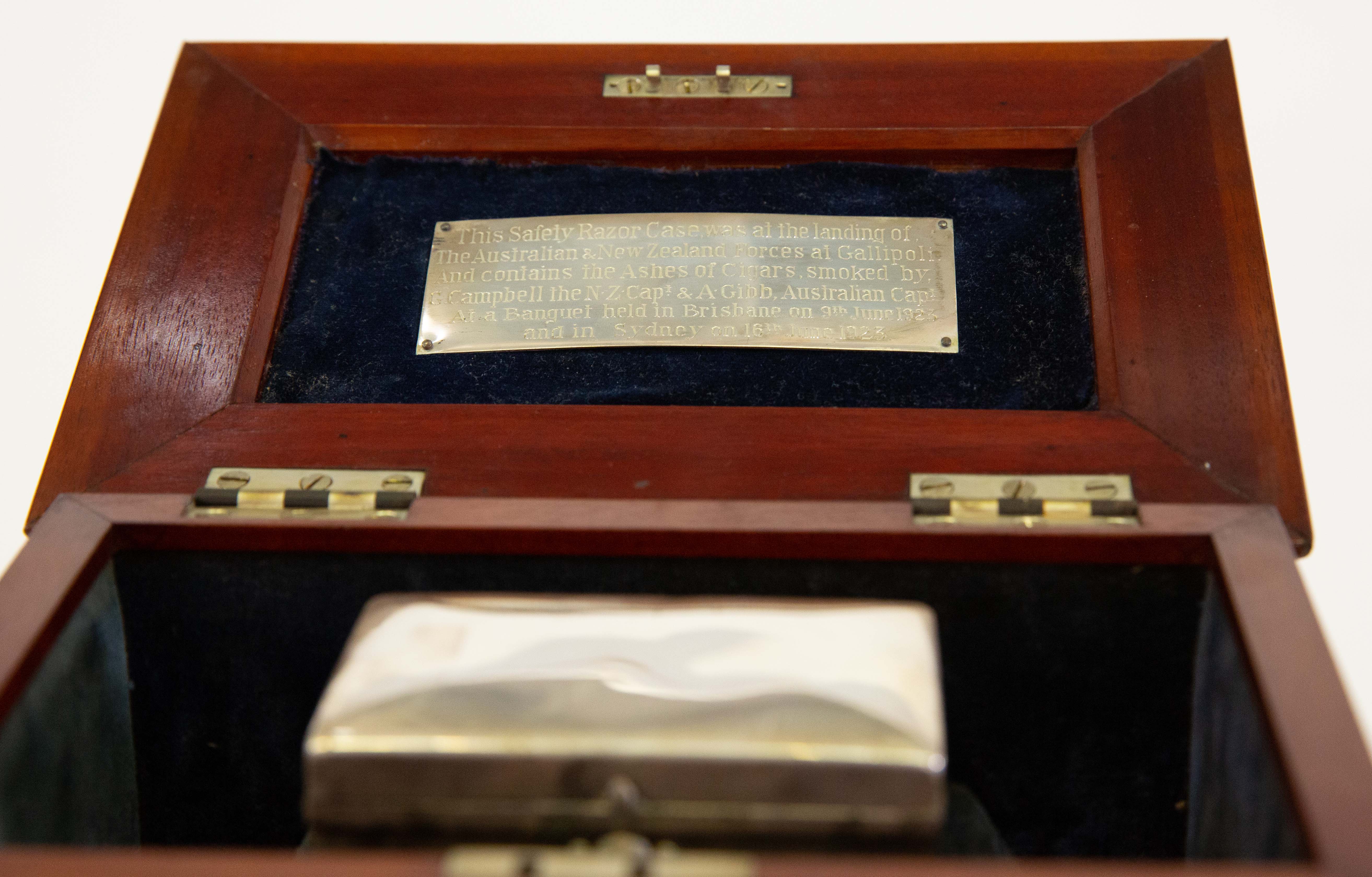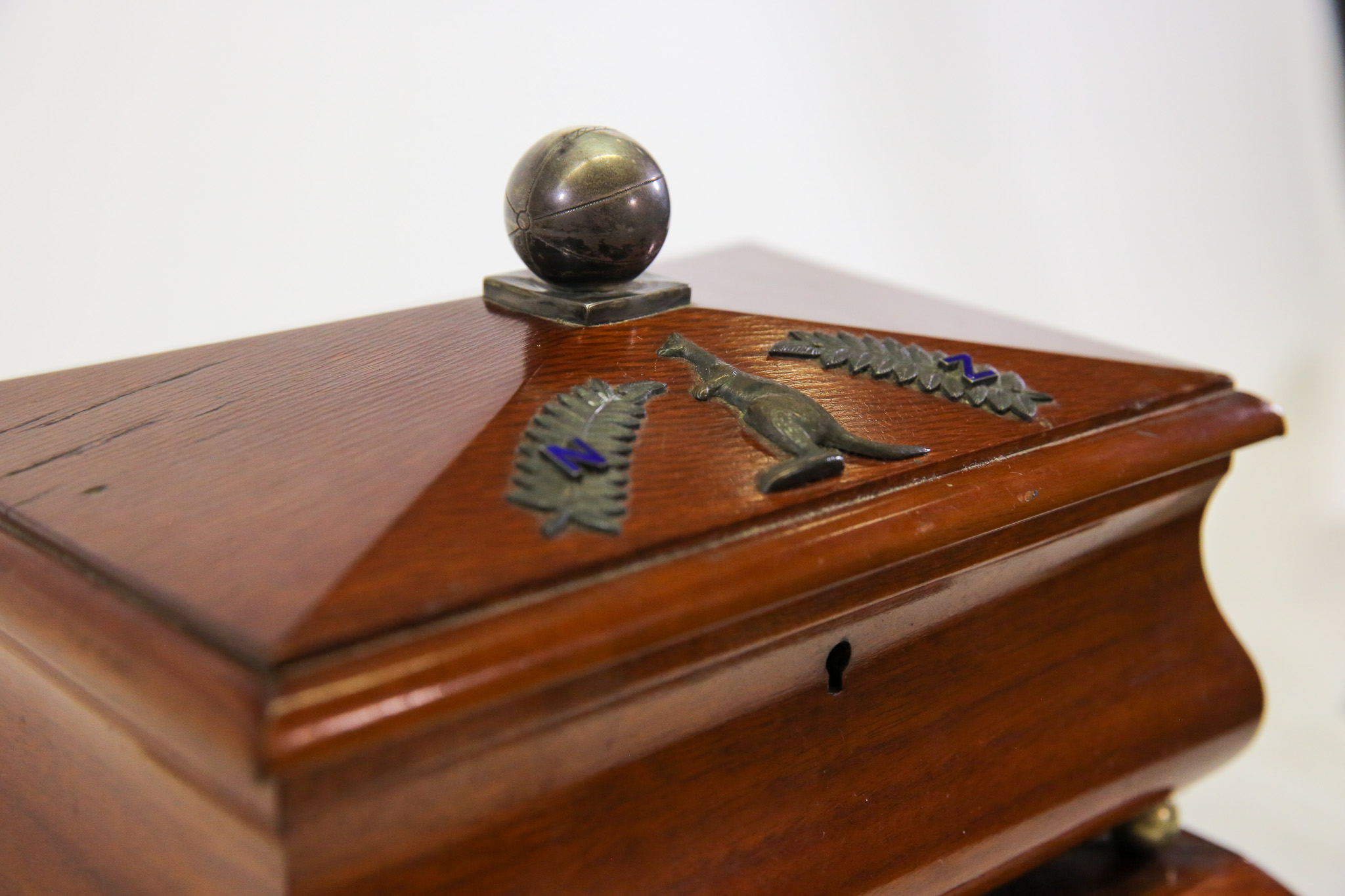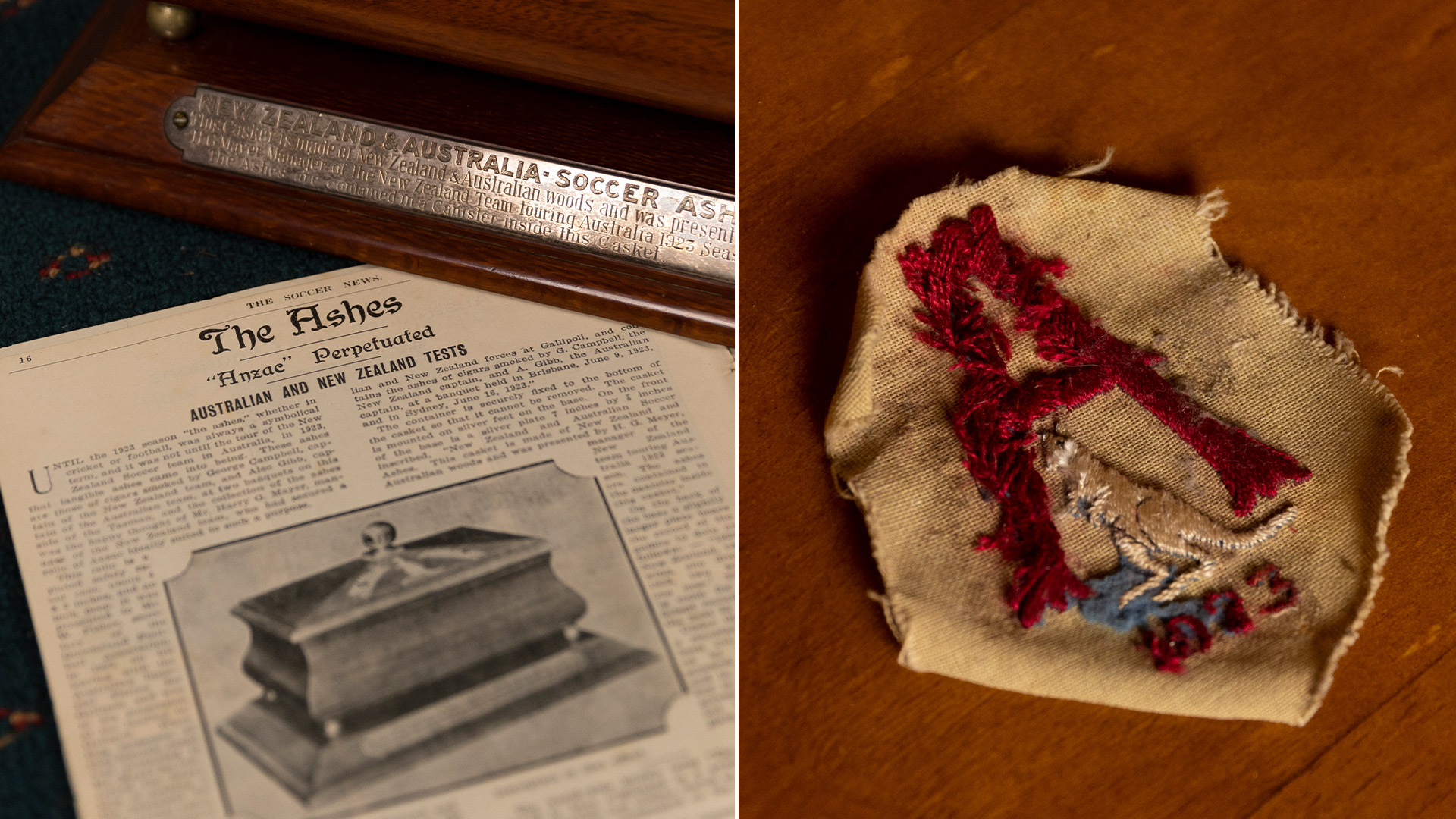Football Australia is delighted to share the discovery of the century-old Australia New Zealand ‘ANZAC Soccer Ashes’ trophy, which was last sighted in 1954.
The trophy was recently uncovered by the family of Football Australia Hall of Fame Member, Sydney Storey, who served as an administrator of the game between 1922 and his passing in 1966.
Built by New Zealand trophy maker Harry Mayer in 1923, the Ashes are a powerful symbol of the ANZAC Spirit which underpinned a strong trans-Tasman sporting rivalry that emerged following Australia’s first-ever ‘A’ International on June 17, 1922.
Constructed from a combination of New Zealand honeysuckle and Australian maple, the elaborate wooden casket contains ashes of cigars smoked by Australian captain Alex Gibb and New Zealand captain George Campbell following the first meeting between the two nations on Australian soil in June 1923.
Powerfully, the ashes are housed in a silver-plated razor case that was carried by Queensland Football Association Secretary, Private William Fisher at the landing of Gallipoli in 1915.

The trophy is last referenced by historical records in 1954, and its whereabouts had remained a mystery ever since.
Nearly 70 years passed before the grandchildren of former Australian Soccer Football Association (ASFA) Chairman Sydney Storey discovered the prized possession in pristine condition, where it had been diligently stored alongside a collection of century-old footballing artefacts.
“The fact that the Ashes have been found is a huge win for soccer history, and also for the Anzacs both, so we’re very excited that they’re in good condition,” the Storey family stated.
“This is not just a trophy, it’s a symbol of Australia and New Zealand working together, playing together, and looking after each other – it’s really, really powerful.

“Of course, how it is used again is up to Australia and New Zealand, but at least it’s now available to the football organisations as a first step.
“In any case, this Anzac trophy is important to the history of Australia and New Zealand, as a symbol of our two countries working together, it can play an important part in celebrating the spirit of togetherness of the Anzacs.”
In the lead up to this year’s ANZAC Day, the trophy was revealed to Australian football historians Trevor Thompson and Ian Syson, who have committed decades to researching this series and advocating for the discovery of the Ashes.
“This is quite possibly the greatest domestic treasure there is in the game. It is a fabulous thing to have in such good condition,” Thompson emphasised.
“It’s packed with so much imagery about the unity of the two countries, and the razor case that had been to Gallipoli referenced the recent experience of fighting shoulder to shoulder during the First World War.
“This assumed a legendary status and between both countries, built on the sacrifices that had been made by the men fighting in the armed forces from both countries against a common enemy.
It’s an emblem more of unity than it is of opposition, which is intriguing for a trophy commemorating a sporting contest.”
Football Australia Chair Chris Nikou said the recovery of the prized ANZAC Soccer Ashes is remarkable, in a year where the Australian men’s national team will mark 100 years since their first “A” International on home shores.
“Preserving and celebrating the history of Australian football has become a renewed focus for Football Australia over recent years, where the recovery of the Anzac soccer ashes is a special moment for not only football but in trans-Tasman history.
“The story attached to these soccer ashes is extraordinary, and its journey is a symbol of the courage and camaraderie of the Anzacs, where this shared spirit continues to be demonstrated every time Australia and New Zealand take to the sporting arena.

“I would like to extend our gratitude to the Storey family for not only recovering this important piece of history but donating this item back to Australian football so that fans on both sides of the Tasman can further reflect upon the storied history between the two nations.”







